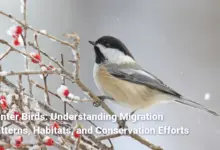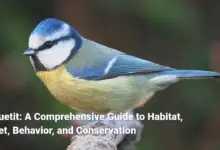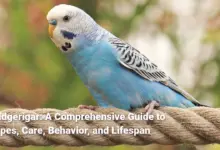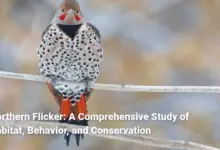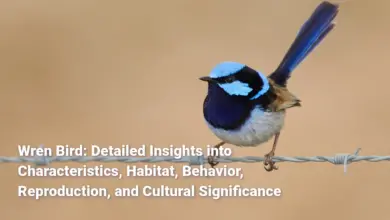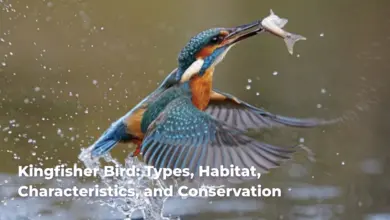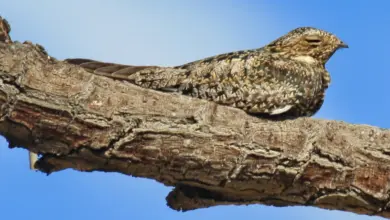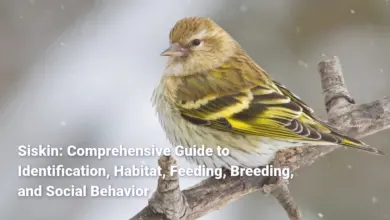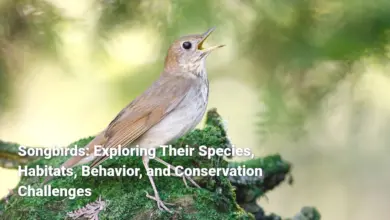House Wren: Comprehensive Guide to Identification, Behavior, Habitat, Diet, and Conservation
A Complete Overview of the House Wren: From Identification and Behavior to Habitat, Diet, Reproduction, and Conservation Efforts
House Wren Overview
The House Wren (Troglodytes aedon) is an unassuming yet captivating bird widely found throughout the Western Hemisphere. Often characterized by its small size and energetic demeanor, the House Wren has earned its place as a favorite among birdwatchers and nature enthusiasts. Measuring about 4.3 to 5.1 inches in length, this lively little bird stands out with its vibrant, bubbly song that fills the air during spring and summer. Nestled in gardens, parks, and forests, the House Wren is not only appreciated for its melodic calls but also for its adaptability, taking advantage of various habitats including urban settings to thrive.
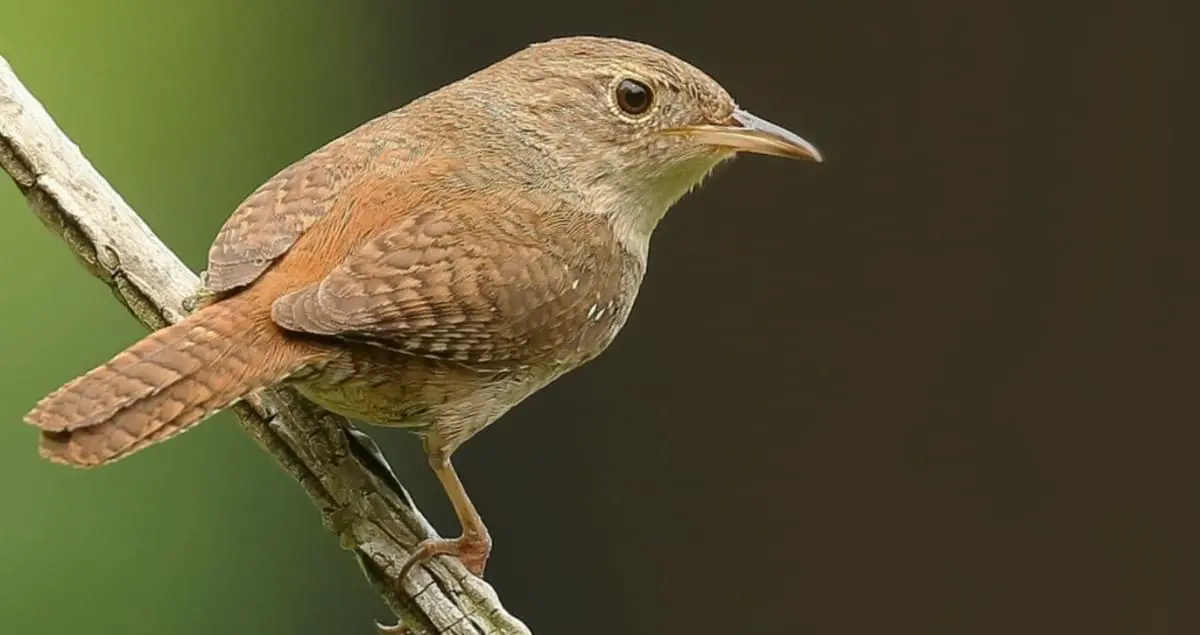
More than just its appearance, the House Wren captures attention with distinct behaviors and interactions. Known for its unyielding territorial nature, the Wren exhibits a level of aggressiveness that can surprise observers. These traits, coupled with an impressive ability to utilize diverse nesting materials, make them resourceful survivors. Their presence is a delightful reminder of nature’s resilience and adaptability, and understanding their habits adds a deeper appreciation for these small creatures.
As we delve into the unique identification features, behaviors, habitat preferences, diet, reproductive strategies, and conservation status of the House Wren, we’ll uncover the fascinating tapestry of life that flourishes within these tiny birds, shedding light on why they continue to enchant so many who come across them.
Identification and Characteristics
The House Wren is a small and largely unremarkable bird in terms of visual splendor, yet its lively behavior and distinct traits make it stand out in the avian world. With its compact body and short wings, it embodies a straightforward charm that resonates more in its actions than its appearance. Often found bouncing from branch to branch, the House Wren can be likened to a tiny, spirited ball of energy that rarely sits still.
Intriguingly, the House Wren’s coloration is predominantly a warm brown, yet its dark barring on the wings and tail creates a delightful pattern that adds a layer of depth to its otherwise plain plumage. Subtle differences across its range such as variations between northern and southern populations bring additional nuance to its characterization, affecting how observers perceive this small bird in the field.
The behavior and vocalizations of the House Wren form a crucial part of its identification. Its bubbling song is a staple in many habitats, often heralding the arrival of spring with its enthusiastic melodies. House Wrens are perceptible due to not just their songs but also their inquisitive nature; they’re often seen flitting around in search of insects or exploring new territories. This combination of sights and sounds builds a complex portrait that remains recognizable to those familiar with the species.
Attributes Summary
| Feature | Description |
|---|---|
| Size | About 4.3 to 5.1 inches (11-13 cm) in length |
| Wingspan | Approximately 5.9 inches (15 cm) |
| Coloration | Plain brown; darker barring on wings and tail |
| Distinct Features | Faint eyebrow stripe; paler throat |
Recognizing these features is not merely academic; they allow for easy identification and greater appreciation of the House Wren and its place in the ecological landscape.
Physical Description
The House Wren is often described as small and compact, making it an endearing sight. Generally, these birds measure between 4.3 to 5.1 inches (11 to 13 cm) long, which is about the size of a sparrow. They weigh approximately 0.3 to 0.4 ounces (10 to 12 grams), placing them among the lighter avian species. Their petite frame is complemented by short wings and a strikingly long tail that is frequently held at a cocked angle, adding a touch of whimsy to their otherwise straight-lined appearance.
Their plumage is predominantly a rich, earthy brown, exhibiting a certain homeliness that evokes a warm and inviting atmosphere often found in gardens and backyards. This color is punctuated by dark barring on their wings and tails, which contributes to their characteristic, muted beauty. The pale throat provides a softer contrast, while the faint eyebrow stripe adds a hint of distinction though subtle, it can help differentiate them from other similar wren species, making it easier for enthusiasts to identify them in the wild.
Beyond coloration, the House Wren possesses a unique physical structure: a compact body paired with a relatively long and curved beak, tailored to its insectivorous diet. The shape and firmness of its beak allow it to adeptly forage for food among the foliage, a behavior that forms an essential part of its living style. This design is similar to a small tool crafted for an intricate job, highlighting the elegance of evolutionary adaptations that both support survival and encourage interaction with various environments.
Comparison of Size to Other Birds
| Bird Species | Size Range |
|---|---|
| House Wren | 4.3 to 5.1 inches (11 to 13 cm) |
| American Robin | 9.8 to 11.8 inches (25 to 30 cm) |
| Sparrow | 4.5 to 7.5 inches (11 to 19 cm) |
| Chickadee | 4.8 to 5.9 inches (12 to 15 cm) |
Through acknowledgment of these details, we can appreciate not only how the House Wren stands out among its peers but also its critical role within its ecosystem.
Color Variations
Color variations in the House Wren offer an enchanting glimpse into the adaptability of this species across different geographical areas. At first glance, the House Wren might seem uniformly brown, but local populations often showcase subtle differences that reflect their habitats. These variations can be likened to how clothing changes styles from one region to another, yet retains the same story at heart sharing commonality amidst uniqueness.
- General Coloration: The House Wren’s plumage tends to be a warm brown overall, adorned with darker barring on the wings and tail. In warmer climates, the coloration may lean more towards reddish browns, while cooler regions can present a grayer hue. Such minute differences can significantly impact identification in the field, allowing for regional distinctions.
- Subspecies Variations: Among its subspecies, the “Brown-throated” House Wren found in southeastern Arizona and the mountains of Mexico is particularly notable a stark warm brown undersurface complements its cinnamon-brown throat and chest. This richness in color variation offers bird watchers a rewarding challenge, as they can learn to recognize these unique attributes based on local context and habitat.
- Seasonal Changes: During molting seasons, some House Wrens may temporarily change in hue, which could confuse observers. Yet, this molting is merely a life stage, reflecting a bird’s journey through its lifecycle. Celebrate the variations as signs of a bird’s adaptability, reminiscent of how seasons change the landscapes we experience.
- Geographic Impact: Variations in coloration are also correlated with geography. For example, birds in densely wooded, cooler areas might display darker hues to blend with their surroundings, while those in sunnier, open spaces adopt lighter shades to maintain camouflage.
The interplay of color within the House Wren species is a tribute to the awe-inspiring adaptability of nature, showcasing how even the slightest differences can tell a story about survival and community.
Distinctive Features
Distinctive features help the House Wren carve out its identity within the avian realm, enabling it not just to exist but to thrive. Each characteristic embodies essential adaptations that best suit its environment and behaviors, making it a remarkable member of the bird family.
- Size and Structure: As previously mentioned, the House Wren’s petite size the smallest among its ilk measures around 4.3 to 5.1 inches (11-13 cm). This is coupled with a compact body and short wings, allowing for rapid movement and agility. The form resembles a round ball bursting with energy, moving briskly in pursuit of its next meal.
- Behavioral Traits: Known for their lively nature, House Wrens have a unique disposition characterized by curiosity and energy. Observers often catch sight of them hopping along branches, their tails held high, a stance that betrays their jubilant spirit. The combination of active foraging and playful antics contributes to their engaging presence in backyards.
- Barring and Stripes: The narrow dark bars across the wings and tail not only create visual interest but serve as useful camouflage among branches and foliage. This natural design minimizes visual detection by predators, echoing a wider narrative of survival and adaptation inherent in all living creatures.
- Adaptability: House Wrens possess a remarkable ability to utilize varied nesting sites from tree cavities to old cans and even shoes showcasing their innovative spirit. Their versatile nesting preferences symbolize resilience in the face of changing environments.
These distinctive characteristics not only contribute to the recognition of the House Wren but also highlight its spirited existence, drawing observers into the vibrant threads of life that these birds represent.
Behavior and Vocalization
Behavioral nuances and vocalizations form the backbone of the House Wren’s identity, coloring its interactions with its environment and other species. Their lively movements and distinctive songs create a vibrant tapestry of activity that’s hard to miss.
House Wrens exhibit a high degree of public interest in their surroundings, often hopping around low branches and shrubs where they search for food. These small birds embody an upbeat spirit and show a remarkable level of inquisitiveness. An observer might compare them to young children playing, swinging their short tails energetically as they explore every nook and cranny in search of insects.
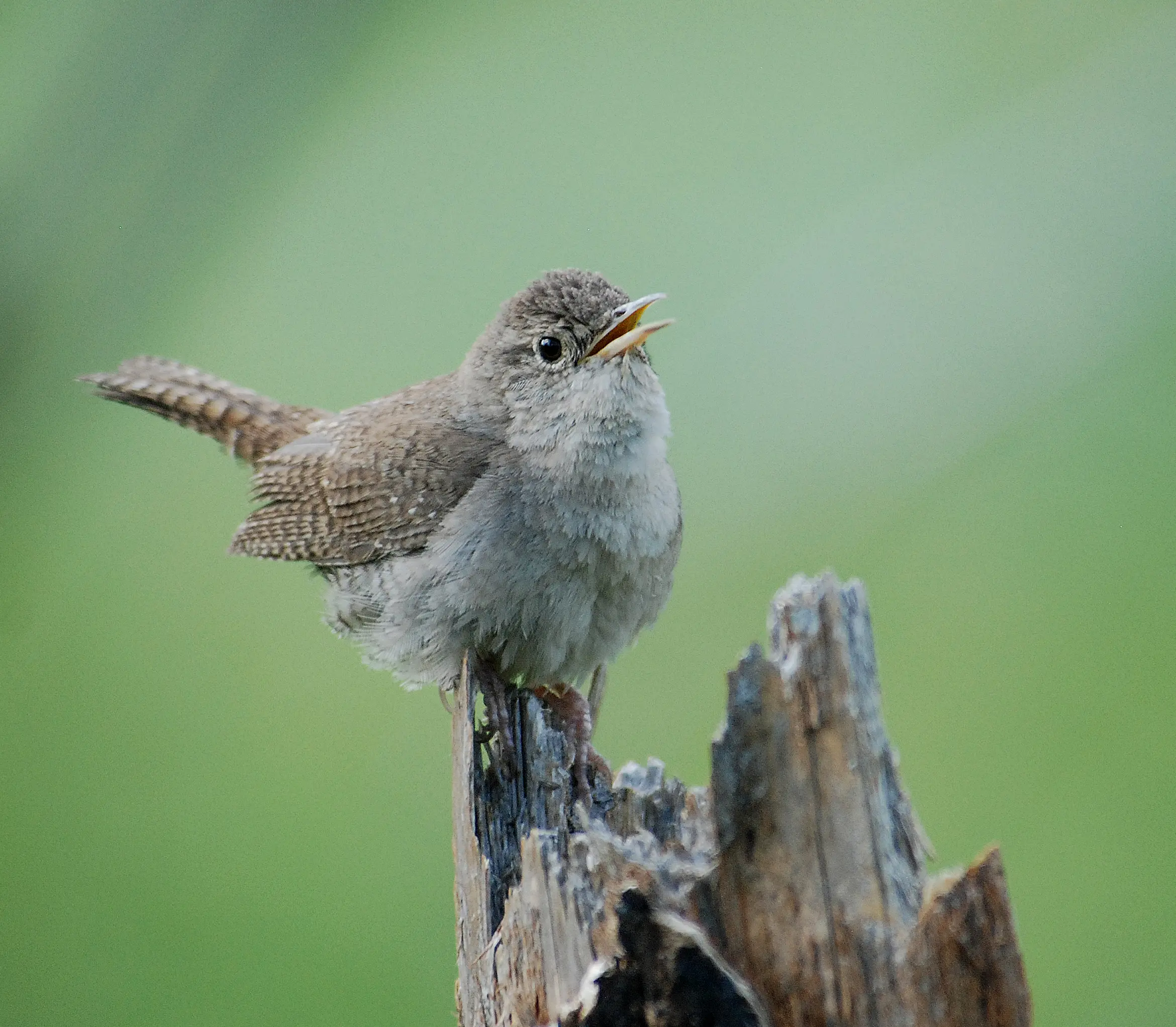
The vocalization of the House Wren further contributes to its buoyant personality. Males become the primary singers during the breeding season during which they can sing up to 600 times in an hour! Their song consists of rich, bubbly trills and swift scolds, resembling a lively conversation between friends. During springtime, their cheerful melodies echo throughout gardens and woodland areas, announcing the arrival of warmer weather.
A notable aspect of their vocal repertoire is the geographic variation found in their songs, creating differences akin to regional dialects in humans. For instance, songs may differ across populations a fascinating fact that encourages ornithologists to examine local variations closely.
In conclusion, the vibrancy of the House Wren is undeniably tied to its engaging behaviors and vocal expressions. These behavioral traits not only strengthen their community presence but also showcase their adaptability, ultimately contributing to their survival in a range of environments.
Singing Patterns
The House Wren’s singing patterns are a spectacular display of vocal talent, particularly accentuated during the breeding season. Understanding these unique singing habits reveals much about how these birds communicate and establish their territories.
Males are the primary singers, often serenading their mates and marking their territory with a rich harmony of pitches, which might feel akin to an opera performance in a garden setting. Their songs are characterized by a series of bubbly, energetic trills each note woven together to create a complex musical tapestry. This elaborate arrangement serves as both a territorial proclamation and an invitation for potential mates.
Interestingly, the sheer volume of song production can vary among individual males, as some may sing more intensely or frequently than others. On average, a male House Wren can belt out approximately 9 to 11 songs each minute, portraying both dedication and enthusiasm in their performance. During peak breeding times, their efforts might intensify, focusing their energy toward showcasing vitality and fitness.
Beyond the individual vocal displays, there exists geographic variation in singing patterns as well. Different populations may have unique melodies and rhythms much like variations in folk music from different cultures. These regional differences are exciting for birdwatchers as they offer a unique auditory experience, making each encounter with the House Wren distinctive.
The singing patterns of the House Wren not only serve the practical purpose of attracting mates and warding off rivals, but they also weave a rich auditory landscape for those lucky enough to observe and listen. Embracing these melodious interactions adds to our appreciation for these lively birds and their integral roles in the ecosystems they inhabit.
Foraging Behavior
House Wrens exhibit ingenious foraging behaviors, demonstrating remarkable flexibility and skill in locating food sources. Their primary diet consists predominantly of insects, making them valuable allies in controlling pest populations within various habitats.
Typically, House Wrens forage actively, often scuttling along the ground or hopping between low branches as they search for delectable morsels. They can be likened to small detectives, peering into nooks and crannies with an unwavering determination as they seek out insects, spiders, and other small invertebrates.
Common food sources include beetles, caterpillars, grasshoppers, and various flying insects such as moths and flies. Their diet is supplemented with spiders, which are often gleaned from delicate webs or seized from the ground further underscoring their adaptability. In many ways, these feeding techniques allow House Wrens to capitalize on their surroundings, much like chefs crafting delicious meals from local ingredients.
House Wrens are also known for their opportunistic feeding behavior, which can shift based on seasonal availability. During winter months, they may visit feeders stocked with suet or mealworms, demonstrating their resourcefulness even when food resources dwindle.
Another interesting aspect of their foraging is their ability to cleverly use spider egg sacs in nesting materials. Including these sacs not only supports their parasitic control strategy but also accurately illustrates how new life forms within their nests might assist in balancing ecological interactions.
Through their nimble movements, diverse diet, and effective foraging strategies, House Wrens play a critical role in maintaining the health of their ecosystems, all while captivating us with their spirited personalities.
Nesting Habits
The nesting habits of the House Wren are a fascinating blend of resourcefulness and tenacity, showcasing their adaptive strategies for reproducing successfully in diverse environments.
House Wrens are cavity-nesting birds, meaning they seek out suitable sheltered locations to lay their eggs and raise their young. They are notorious for their creativity in selecting nesting sites, often opting for old woodpecker holes, tree cavities, and human-made structures such as birdhouses or discarded items like soda cans and old boots.
Males often take the initiative in constructing multiple potential nests within their territory, which serves the dual purpose of attracting females and increasing their chances of securing a successful breeding site. This behavior can be likened to a property developer showcasing various homes to potential buyers each nest is carefully curated and exemplary of the male’s construction skills.
The physical characteristics of their nests are just as impressive. Typically constructed from twigs, the nests are often lined with softer materials like feathers and grasses to create a cozy environment for the eggs. Interestingly, some House Wrens incorporate spider egg sacs into their nests. This clever tactic not only plays a role in parasite management but also ensures that a food source is readily available for the nestlings once they hatch.
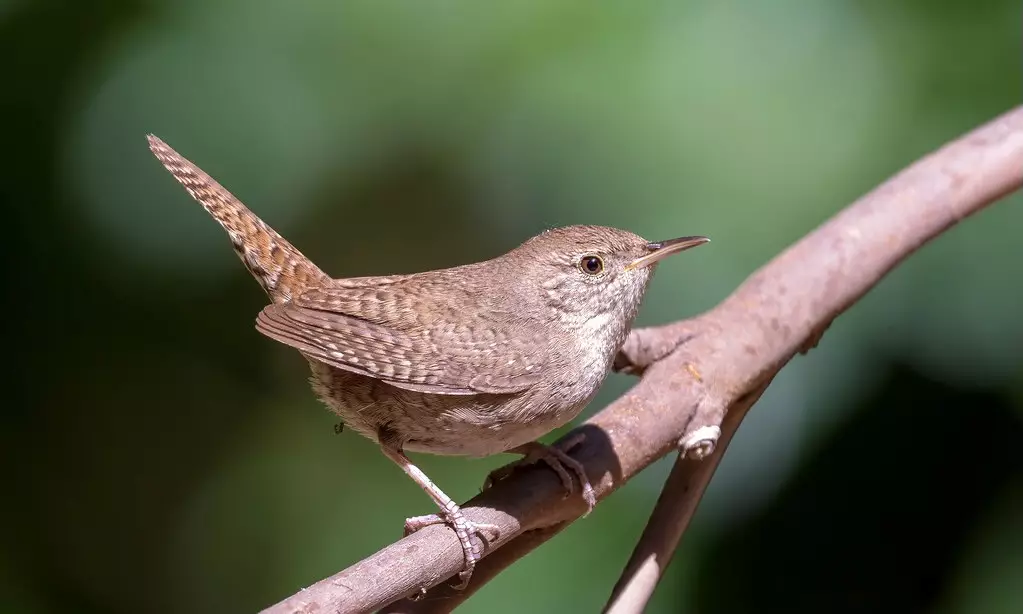
The female House Wren usually lays clutches of 3 to 10 eggs, with an average of 5 to 6 eggs per brood. Incubation lasts between 12 to 18 days, during which the female takes on the primary role of heat preservation while the male gathers food to sustain her.
Once the eggs hatch, the nestlings stay in the protective confines of the nest for about 15 to 17 days, with both parents actively participating in feeding them. This devoted parental care enhances the odds of survival for the young, demonstrating the importance of their adaptive nesting strategies.
In summary, the nesting habits of House Wrens underscore both adaptability and creativity. By employing resourceful materials and implementing effective breeding strategies, they exemplify the resilience and resourcefulness inherent in nature.
Habitat and Distribution
The House Wren thrives in diverse habitats across a broad geographic range, associating predominantly with areas exhibiting a mixture of vegetation. Their adaptability is remarkable, making them capable of living in various environments from rural farmlands to urban gardens.
House Wrens are widespread across the Americas, with their range extending from southern Canada all the way down to southernmost parts of South America. They favor habitats that are open or semi-open, where shrubs, trees, and tangles exist alongside clearings. This preference for a variety of settings allows them to flourish in different ecological contexts, benefitting from the resources each environment provides.
Primarily, House Wrens inhabit eastern deciduous forests, southern swamps, conifer forests, and even mountainous regions, demonstrating their versatility. They have even been spotted at elevations of up to 10,000 feet, further showcasing their remarkable adaptability.
Urban settings have also become increasingly favorable for House Wrens; their presence is commonly noted in suburban gardens and parks, where they effectively meld into the tapestry of residential life. They thrive in spaces with sufficient food availability and potential nesting sites, thus enhancing their compatibility with human environments.
Geographic Range
The geographic range of the House Wren reflects broad coverage across various ecological regions, which further illustrates its adaptability. Breeding populations can be found across substantial portions of North America, extending to regions such as Central America, the West Indies, and reaching down into the southern tip of South America.
In North America, House Wrens primarily inhabit regions east of the Rocky Mountains while exhibiting particularly strong populations in the eastern United States. Notably, they have also established successful breeding sites in parts of Canada and Mexico. This broad distribution indicates not only their habitat adaptability but also highlights their resilience in transitioning to different ecological contexts.
Interestingly, regional variations can affect physical characteristics; for example, certain populations in the Caribbean may exhibit distinct coloration patterns compared to their North American counterparts, adding a layer of complexity to their identification.
Furthermore, observed population trends over the years indicate stability in their numbers, reinforcing their status as a resilient and adaptable bird. Sensibly choosing environments that offer sufficient food and nesting opportunities has helped solidify the House Wren’s place within various ecosystems.
Preferred Environments
Preferred habitats for House Wrens tend to showcase a mix of vegetation types specifically, areas boasting a range of trees and shrubs interspersed with open spaces. Generally, they flourish in environments providing both ample shelter and plentiful food sources, reflecting their versatility and adaptability.
Some essential habitat components include:
- Open Woodlands: These regions, where trees are not too dense, afford easy access to nesting sites while allowing for efficient foraging, an ideal balance for House Wrens.
- Riparian Zones: Proximity to water sources enhances insect availability, supporting their insectivorous diet and providing a reliable habitat for nesting.
- Agricultural Fields: Not only do House Wrens find resources in agricultural environments, but their adaptability makes them comfortable residing in the edges of these fields.
- Urban Settings: With gardens, parks, and human-made structures providing nesting opportunities, House Wrens have successfully adapted to urban landscapes, allowing them to coexist with human activity.
- Shrublands: Dense shrublands offer shelter from predators while providing access to insects, making it a prime location for foraging and nesting.
Seasonal Movements
House Wrens exhibit migratory behavior that corresponds with seasonal shifts, primarily moving to warmer climates during the winter months. This behavior is significant, as it allows them to optimize their living conditions based on food availability and environmental changes.
During the breeding season, generally between late March and early April, male House Wrens typically return to nesting sites they favored in previous years, often settling near already established males. This instinct underscores their territorial nature and sense of familiarity with these locations, enhancing their chances of successful breeding.
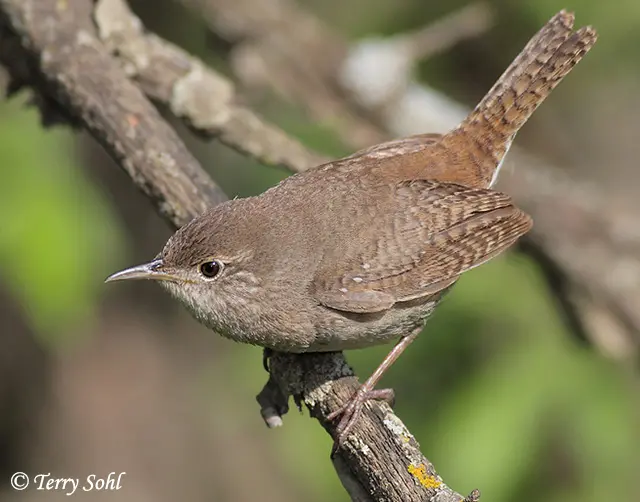
Interestingly, first-year males might also settle near established males for safety. This can lead to increased competition for nesting sites and food as they establish their territories. The cyclical nature of their migratory patterns further illustrates the evolutionary role of adaptability in relation to the availability of resources.
Through understanding their habitat preferences and migratory behavior, bird watchers gain insights into the life of the House Wren, enhancing appreciation for its place in various ecosystems.
Diet and Feeding
House Wrens primarily have a diet focused on insects, which forms the backbone of their food intake. Their foraging habits reflect both adaptability and skill, enabling them to thrive in various environments.
- Insects as Primary Food Source: The House Wren primarily feeds on various insects, including:
- Beetles: An important protein-rich food source, readily available in gardens and near woody areas.
- Caterpillars: Especially crucial during the breeding season when nestlings demand extra nutrients for healthy growth.
- Grasshoppers and Crickets: Easy to catch and nutritionally dense, these insects provide quick energy boosts.
- Moths and Flies: These nocturnal insects contribute to their flexible foraging techniques, allowing them to adjust to different feeding times.
- Supplementary Diet Components:
- Spiders: While not true insects, spiders are important and readily consumed, often found crawling through the underbrush.
- Ants: Available throughout the year, they are dense in nutrients, offering substantial energy.
- Fruits and Seeds: Occasionally consumed when insects are less prevalent, allowing for a minor diversification in their diet.
- Feeding Habits:
House Wrens employ diverse feeding techniques, seeking food by gleaning insects from foliage or hopping around branches. They are particularly skilled at spotting movement and respond rapidly, a strategy conducive to their agility in avoiding predators.
House Wrens may also explore human habitats, taking advantage of bird feeders filled with mealworms or suet, revealing their opportunistic dining patterns.
By primarily indulging in a diet rich in insects and supplementing with other nutrient sources, House Wrens play an essential role in controlling pest populations, ultimately fostering dynamic ecological balance within their habitats.
Main Diet Components
The main elements of the House Wren’s diet can be summarized as follows:
| Diet Component | Examples |
|---|---|
| Insects | Beetles, caterpillars, grasshoppers |
| Spiders | Caught from webs and foliage |
| Ants | Available year-round |
| Fruits | Particularly in summer when insects lessen |
| Seeds | Occasionally taken, though minor |
This dietary flexibility exemplifies the House Wren’s adeptness in thriving across varied environments.
Feeding Techniques
Feeding techniques employed by House Wrens illustrate their adaptability and ingenuity as they forage in nature. These small birds have honed specific strategies that allow them to maximize foraging success, ensuring their survival in diverse habitats.
- Gleaning: House Wrens frequently exhibit gleaning behavior, skillfully searching through foliage to locate insects hiding beneath leaves. This technique is akin to sifting through sand while searching for valuable gems time-consuming yet crucial for discovering food sources.
- Hopping and Flitting: In addition to gleaning, House Wrens are known for their agile movements, including hopping along the ground and flitting quickly between branches. These behaviors not only enhance their insect-catching abilities but also enable quick evasion from potential predators.
- Probing: With their surprisingly curved and pointed beaks, House Wrens can probe into small crevices and under bark where insects may reside. This ability to access hard-to-reach areas increases their foraging success, providing a feast even in less favorable conditions.
- Versatile Feeding Locations: House Wrens utilize varied feeding locations, from dense brush to open gardens. Their willingness to exploit human-made habitats, such as backyard feeders, underscores their resourcefulness in the quest for sustenance.
In summary, the House Wren’s innovative feeding techniques gleaning, hopping, flitting, and probing play a critical role in maintaining their strong population numbers and highlight their pivotal ecological roles as insectivores.
Reproduction and Lifecycle
House Wrens have an intriguing reproductive cycle marked by unique mating rituals, nesting behaviors, and growth patterns. These aspects not only showcase their reproductive success but also reflect the adaptability of this species in fluctuating environments.
- Mating Rituals: The mating season for House Wrens begins in April, where males establish territories and attract females through vocal performances. The rich, bubbling song they produce serves both as a courtship tool and a means of asserting dominance in their chosen habitat. The presence of multiple nests enhances the competitive edge, as females will inspect potential nesting sites before making their choice signifying the importance of this selection process in establishing partnerships.
- Nesting and Egg Laying: Female House Wrens typically lay between 3 to 10 eggs, with the most common clutch sizes averaging around 5 to 6. These eggs, often pinkish-white with reddish-brown speckles, are primarily the female’s responsibility, who incubates them while the male forages for food to support her during this critical period. The incubation lasts around 12 to 18 days, showcasing the significant role the parents play in nurturing their offspring.
- Growth and Development of Young: After the eggs hatch, nestlings remain in the nest for approximately 15 to 17 days, during which both parents are actively involved in feeding them. This high level of parental cooperation enhances the nestlings’ chances of survival, ensuring they receive adequate nourishment during their early life stages. Remarkably, House Wrens can raise multiple broods in a single breeding season, often leading to the production of 1 to 3 broods, depending on environmental conditions and food supply.
- Adaptations for Success: An essential adaptation in their reproduction involves the use of unconventional nesting sites, including old cans and shoes. Such creative choices help House Wrens optimize reproductive success and ensure safety for their young. Additionally, their ability to construct multiple nests within their territories signifies strong social dynamics at play, with males intricately aiming to impress females and secure successful mating opportunities.
By understanding the reproduction and lifecycle of House Wrens, one can appreciate the intricate behaviors and adaptations that contribute to their ongoing success as a species, illuminating the delicate balance of nature and survival.
Interactions with Other Species
House Wrens, while small, command significant ecological presence through their interactions with various species. These interactions reflect both aggressive nesting behaviors and competitive tendencies that shape their relationships within the ecosystem.
- Competition for Nest Sites: House Wrens are fiercely competitive when it comes to nesting sites, often displacing other native birds, such as Tree Swallows, by evicting them from their nests or eliminating their eggs. This behavior not only showcases their assertiveness but poses challenges for other species attempting to establish their territories in the same habitat. In essence, House Wrens take on the role of “gatekeepers,” ensuring prime nesting sites are available for themselves, though this comes at the cost of other birds’ reproductive success.
- Predation Risks: Their aggressive interactions extend to potential predators. House Wrens exhibit behaviors to combat threats during nesting, such as choosing nesting sites that offer better concealment from predators. The strategic positioning of nests can significantly influence reproductive success, with House Wrens opting for locations that maximize protection.
- Collaborative Techniques: Interestingly, House Wrens sometimes incorporate spider egg sacs within their nesting materials. The spiders emerging from these sacs help control pest populations within the nests, showcasing an incredible instance of mutual benefit. This behavior reflects the broader ecological principle of utilizing available resources to the advantage of both the House Wren and the ecological community.
- Community Dynamics: In the broader context, House Wrens are considered keystone species in their environments due to their role in maintaining insect population control. Their feeding habits contribute to pest management, supporting the overall health of local ecosystems.
Through these multifaceted interactions, House Wrens underscore the complexity and interdependence of species within natural habitats, further enriching our understanding of ecological relationships.
Competition for Nest Sites
The competition for nest sites among House Wrens is notorious and distinctly aggressive. Their strong territorial instincts drive them to defend their chosen nesting areas from both conspecifics and other bird species, particularly those that rely on similar nesting structures.
House Wrens may actively remove eggs or young from other birds’ nests. This high-stakes nesting behavior can significantly reduce the populations of competing species, such as bluebirds and chickadees, allowing the wrens to monopolize prime nesting locations. The rivalry and aggression surrounding nesting sites resemble a fierce game of musical chairs, where the prize is a safe and suitable location for raising young.
Interestingly, House Wrens display a profound adaptability in nest site choices. They are not limited to traditional tree cavities or birdhouses; instead, these resourceful birds may opt for unconventional spaces, such as old shoes, cans, or even gaps in fences. This characteristic not only showcases their ingenuity but also reflects their ability to thrive in habitats modified by human activity.
One particularly fascinating observation is that male House Wrens will often build multiple potential nests within their territories to offer prospects for females. This behavior is a competitive strategy that compels the females to make choices based on nest quality and safety, further intensifying the competition for optimal nesting locations.
This dynamic of competition and adaptability among House Wrens portrays a vivid narrative of resilience. Their ability to triumph in challenging situations ultimately ensures their reproductive success and plays a key role in shaping avian communities across diverse environments.
Predation and Threats to Nestlings
Despite their tenacity, House Wrens face numerous threats in their nesting environments, predation being one of the most significant challenges. Empirical studies reveal that predation accounts for roughly 70% of unsuccessful nesting attempts, highlighting the precarious nature of their reproductive endeavors.
Predators can include a range of wildlife, from cats and raccoons to larger birds of prey that might target House Wren nestlings. The tension between beauty and danger is tangible the cozy nests that the wrens construct, filled with soft feathers and foliage, are simultaneously a sanctuary and a potential target.
In response to these predation threats, House Wrens exhibit adaptive nesting behaviors. They prefer to place their nests in locations that minimize exposure to potential threats, often seeking cover in dense vegetation. This instinctual choice serves multiple purposes: it not only provides shelter but also enhances camouflage against predators that might detect them through sight.
Moreover, House Wrens’ strong territorial instincts lead them to defend their nesting territories vigorously. Their aggressive nature helps deter some potential intruders, including other birds that may approach their nesting areas. In this interplay of avoidance and aggression, the House Wren strives to maintain its breeding success amidst ecological challenges.
To further safeguard their young, House Wrens may incorporate spider egg sacs into their nests, utilizing another level of ecological management by reducing the presence of parasites. This behavior reflects a profound understanding of their environmental interactions and a desire for protective measures that increase the likelihood of their nestlings’ survival.
Overall, the dynamics between predation and the aggressive nesting behavior of House Wrens paint a clear picture of survival in a world where competition is fierce, and threats are prevalent. Their remarkable adaptability aids in navigating these challenges and heightens the complexity of life in the avian landscape.
Conservation Status
The conservation status of the House Wren (Troglodytes aedon) indicates a relatively stable population across its range. With a substantial global breeding population estimated at around 190 million individuals, the House Wren maintains a classification of “Least Concern” on the IUCN Red List. This designation reflects the bird’s adaptability and resilience in various environments traits that have enabled them to flourish amid changing landscapes.
- Population Trends: Over recent decades, population trends for House Wrens have demonstrated a slight increase in certain regions. Research indicates an annual growth rate of approximately 0.9%, bolstered by breeding habitats that include open, mature woodlands and shrublands. Nevertheless, localized declines may happen due to habitat loss or competition with non-native species, notably the House Sparrow.
- Reliable Data Sources: Collecting reliable data is crucial for accurate conservation assessments. The good conservation credibility rating associated with the House Wren means that the available information on population dynamics is credible and representative of the species. Continuous monitoring efforts are essential for discerning long-term trends and potential threats that the species may encounter.
- Habitat Management: Active conservation efforts should focus on preserving habitats that support breeding requirements. Guaranteeing the availability of favorable nesting sites whether in natural settings or through maintenance programs for suburban gardens can significantly aid House Wren survival rates.
- Community Involvement: Engaging communities through educational programs about the House Wren’s role in controlling pests can foster positive perceptions of these birds and promote habitat conservation endeavors. Creating nesting sites, such as feeding stations and birdhouses, ensures safe spaces for reproduction and furthers community commitment to local wildlife preservation.
Through consistent monitoring and management strategies, the resilience of the House Wren can be supported, allowing future generations to continue enjoying its beautiful song and spirited behavior in various habitats.
Population Trends
The population trends of House Wrens offer a reassuring narrative of stability amidst changing environmental conditions. During the last few decades, significant monitoring efforts have helped shed light on the dynamics affecting these small birds.
- Estimated Population Size: With an estimated global breeding population of approximately 190 million individuals, House Wrens showcase their adaptive abilities and strong foothold across the Americas. Brief glimpses into forest edges, urban parks, and backyards reaffirm their presence as common songbirds in these locales.
- Annual Changes: The species exhibits an annual population change of about 0.9%, indicating a moderate growth trend over certain regions. The confidence interval surrounding this estimate reflects solid data collection enough to suggest that House Wrens are not facing immediate threats to their overall population stability.
- Regional Variance: While the average trends are positive, it is worth noting that localized population assessments illustrate fluctuating numbers due to habitat loss or competition from introduced species. Conservation practitioners and bird watchers who study these variations can encourage proactive conservation strategies that respond to immediate threats.
- Breeding Habitats: House Wrens favor habitats that include open woods, shrublands, and areas with a mix of mature vegetation, allowing them to access food sources and appropriate nesting sites. Conservation efforts aimed at preserving such environments are critical for ensuring continued breeding success.
In essence, monitoring population trends is vital for the ongoing resilience of the House Wren. By recognizing patterns and adapting conservation strategies, it is possible to maintain healthy populations of this enchanting little bird.
Threats and Conservation Efforts
While the House Wren enjoys a stable population, it still faces several threats that could affect its long-term viability. Understanding these challenges is essential for ensuring effective conservation measures.
- Habitat Loss: As urban areas expand and agricultural practices evolve, the natural habitats preferred by House Wrens can diminish. Urbanization tends to replace dense shrub and woodland areas making it more challenging for these birds to find suitable nesting sites. Ensuring habitat preservation and restoration is vital to safeguard their populations.
- Competition with Introduced Species: Competition poses a significant challenge, particularly from introduced species like the House Sparrow. These non-native birds can outcompete House Wrens for nesting sites, particularly in urban environments where natural cavities are scarce. Continued education about the consequences of introducing species can spur efforts to create safe nesting spaces and habitats.
- Predation: Natural predators, including domestic cats, raccoons, and snakes, pose risks to both adult birds and their young. Nesting sites that lack adequate shelter increase vulnerability, affecting reproductive success. Educating communities about responsible pet ownership and providing safe nesting sites are initiatives that can mitigate these risks.
- Conservation Strategies: Conservation efforts are crucial for maintaining the House Wren population within habitats dealing with these critical challenges. Strategies include:
- Habitat Restoration: Encouraging the preservation of native vegetation and creating buffer zones around urban developments can enhance nesting opportunities.
- Nest Box Programs: Promoting the installation of birdhouses in backyards and parks increases available nesting sites and offers safe places for reproduction.
- Public Engagement: Conducting community outreach programs can foster appreciation for the House Wren and encourage local conservation programs focused on providing supportive habitats.
By addressing these threats through targeted conservation strategies, the House Wren’s continued presence can be safeguarded, ensuring future generations share in the joy of their vivacious song and lively behavior.
Fun Facts and Anecdotes
House Wrens bring a jovial flair to backyard birdwatching, and several fun facts and anecdotes further illustrate their charm and character alongside their important ecological roles.
- Vocal Qualities: Despite their small size, House Wrens possess extraordinarily loud and cheerful songs that belie their petite stature. These bubbly melodies often echo across gardens and parks, developing a delightful soundtrack of nature. Their cheerful songs resonate with vibrancy from dawn till dusk, captivating both seasoned birdwatchers and casual nature enthusiasts alike.
- Aggressive Nesting Behavior: Known for their assertive nesting behavior, House Wrens often drive larger birds from their territories. This competitive nature not only marks them as unique within the avian community but also highlights notably fierce instincts that come into play. Their drive to secure nesting sites can be compared to a game of chess, where strategic moves can lead to both winning and losing positions.
- Clever Nest Building: House Wrens have a unique knack for constructing nests by using various materials, including twigs, grasses, feathers, and sometimes even trash. They often fill the nests of other birds with sticks, rendering them unusable; this quirky behavior showcases not only their ingenuity but also their competitive spirit in securing ideal nesting locations.
- Cultural References: House Wrens have made cultural appearances, most notably as pets on the beloved children’s show “Mister Rogers’ Neighborhood.” This inclusion reflects their presence in popular culture and highlights their important role in fostering a connection to the natural world for future generations.
The House Wren embodies an intriguing mix of charm, competitive spirit, and cultural significance, making it a delight for bird watchers and nature lovers. Such a wide-ranging narrative showcases the remarkable qualities of this small avian marvel.
Unique Behaviors
The House Wren’s behaviors extend beyond the typical avian activities, reflecting their vibrant character and adaptability in various environments.
- Aggressive Nesting Tactics: House Wrens are notoriously competitive, often removing the eggs of other birds or even destroying their nests to secure prime nesting sites. This aggressive behavior highlights their fierce instinct for survival, acting almost like a property developer vying to control valuable real estate.
- Multiple Nest Construction: Male House Wrens are known for building multiple nests within their territories. This strategy not only serves to impress females but also offers them several options when choosing where to lay their eggs. Such behavior mirrors a savvy real estate market, where diversification increases the odds of closing a successful deal.
- Incorporation of Spider Egg Sacs: Ingeniously, House Wrens incorporate spider egg sacs into their nests, which hatches into spiders that help control parasite populations. This dual purpose showcases their clever adaptation to their environment a striking example of utilizing available resources to ensure the health and safety of their young.
- Social Interactions: The House Wren displays a quirky social dynamic, often interacting with others of its kind in complex ways. Males singing to establish territory, females inspecting multiple nests, and communal foraging all play a role in enhancing their social structure and community cohesion.
Through these unique behaviors and interactions, the House Wren demonstrates not only its capacity for adaptability and survival but also its intriguing character within diverse ecosystems.
Interesting Adaptations
House Wrens are exemplary in exhibiting unique adaptations that enhance their survival, showcasing their resourceful nature in a variety of environments.
- Adaptability to Human Environments: House Wrens have demonstrated a remarkable ability to thrive in urbanized spaces. By integrating into human habitats, they utilize an array of nesting materials and explore gardens and parks as vital foraging grounds. This willingness to adapt embodies an opportunistic nature, enabling them to make the best out of changing circumstances.
- Cavity Nesting: Their preference for cavity nesting offers protection against predators and harsh weather, showcasing the evolutionary advantage of such a strategy. They can often be found nesting in familiar places like old birdhouses, tree cavities, and even urban structures, reinforcing their adaptability.
- Enhanced Vocal Abilities: The complex vocalizations and diverse song patterns of House Wrens function not only in mate attraction but also as effective tools for territory establishment. Their remarkable ability to produce a variety of tunes helps them communicate distinct messages within their environment, ensuring they remain competitive during the breeding season.
- Mimicry and Learning: House Wrens are known to mimic calls of other bird species, giving them an edge in social dynamics. Such mimicry can disrupt the normal interactions among rival species, serving as a remarkable example of how learning plays an essential role in behavioral flexibility.
Each of these adaptations is a testament to the resilience and ingenuity of the House Wren. Reflecting both ecological success and intriguing behavioral traits, House Wrens continue to capture the interest and admiration of individuals who encounter these charming birds in their natural habitats.
In summation, the House Wren is a dynamic and engaging species that exemplifies resilience, adaptability, and the multifaceted relationships within their ecosystem. Their behaviors, interactions, and delightful songs add an essential vibrancy to the environments they inhabit, making them not only valuable ecological contributors but also treasured companions in the intricate web of life.

